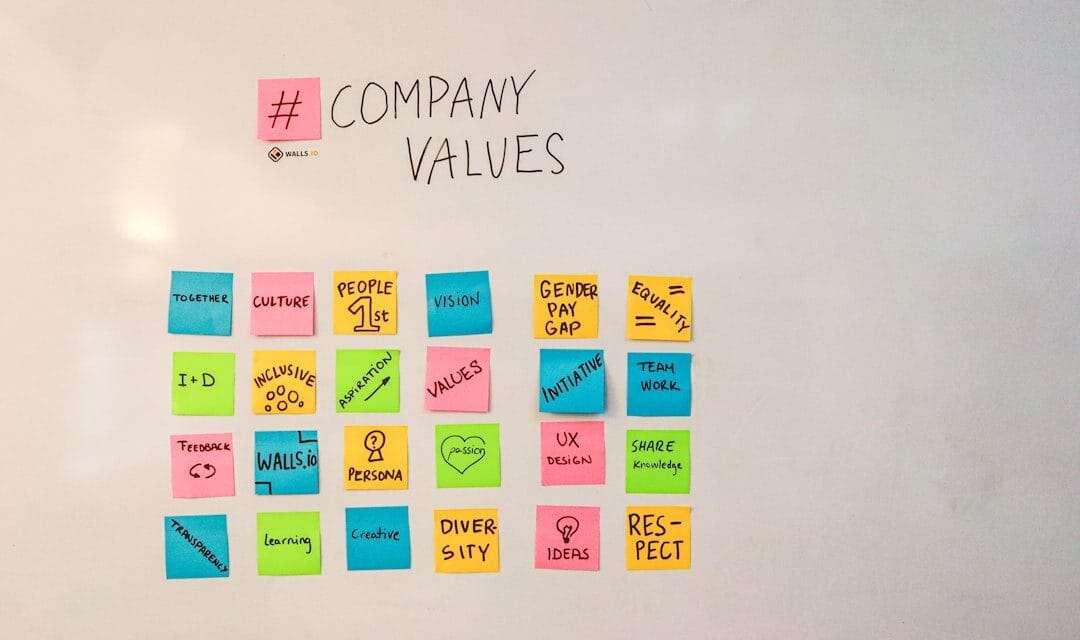In today's rapidly evolving technological landscape, effective leadership is more critical than ever, especially for CTOs and CIOs in Australia. Did you know that organizations with strong leadership development programs experience 2.5 times the revenue growth compared to those without? This alarming statistic underscores the need for leadership development tailored for CTOs and CIOs in Australia, focusing on enhancing both technical prowess and soft skills. As these technology leaders navigate complex challenges, from digital transformation to team dynamics, the right development strategies can empower them to drive innovation and foster a thriving workplace culture. This blog post will explore key components and strategies that contribute to successful leadership development for today’s tech executives, ensuring they are well-equipped to lead their organizations into the future.
Understanding the Unique Challenges Faced by CTOs and CIOs
The evolving role of technology leaders
CTOs and CIOs are at the forefront of technological innovation, responsible for not only managing IT infrastructure but also driving digital transformation within their organizations. However, as the landscape continues to shift, these leaders face unique challenges that require a robust approach to leadership development tailored for CTOs and CIOs in Australia.
Common pain points and obstacles
Rapid Technological Changes: Keeping pace with the latest technologies can be overwhelming.
Cultural Shifts: Transitioning to agile practices and fostering a collaborative culture is essential but challenging.
Maintaining Team Morale: Navigating through constant change can affect team dynamics and productivity.
Strategic Alignment: Aligning technology initiatives with business objectives is crucial yet complex.
The Importance of Leadership Development in Technology
Why leadership skills matter for CTOs and CIOs
In a technology setting, effective leadership goes beyond technical proficiency. It encompasses various skill sets that enable leaders to guide teams through complexities.
Influencing Others: Strong leaders inspire and motivate their teams, fostering a culture of innovation.
Decision-Making: Effective leaders make informed decisions that impact technology strategy and implementation.
Communication: Clear communication helps bridge the gap between technical and non-technical stakeholders.
Impact on team dynamics and company culture
An effective leadership framework can dramatically enhance team dynamics and overall company culture. Empowered leadership can result in:
Greater trust within teams
Heightened sense of accountability
Improved collaboration across departments
Key Components of Leadership Development Tailored for CTOs and CIOs in Australia
Personalized coaching methodologies
The best approach to leadership development is personalized and context-driven. Tailored programs for CTOs and CIOs focus on:
Understanding Individual Leadership Styles: Assessment tools help identify strengths and areas for growth.
Scenario-Based Learning: Real-world scenarios equip leaders with strategies to handle complex situations.
Emphasis on communication and collaboration
Developing exceptional communication skills is critical. Training may include:
Workshops on active listening
Techniques for facilitating productive meetings
Strategies for managing remote teams effectively
Strategic thinking and decision-making
Leaders must cultivate strategic thinking to navigate their organizations toward success. Key elements include:
Data-Driven Decision Making: Utilizing analytics to make informed choices.
Long-Term Vision Planning: Setting objectives that align with company goals and anticipating future challenges.
For further insights on the changing role of technology leaders, you can explore additional resources from IBM.
Crafting a Customized Development Program
Assessing individual leadership styles
One of the foundational steps in effective leadership development tailored for CTOs and CIOs in Australia is assessing individual leadership styles. This can be achieved through:
360-Degree Feedback: Gathering insights from peers, subordinates, and superiors to get a well-rounded view of one’s leadership impact.
Personality Assessments: Utilizing tools like the Myers-Briggs Type Indicator (MBTI) or DiSC to understand personal strengths and weaknesses.
Setting measurable goals and outcomes
Creating a customized development program hinges on establishing clear, measurable goals. These might include:
Identifying Competencies: Determining which skills or behaviors need enhancement to align with organizational goals.
Setting KPIs: Establishing key performance indicators that will help track progress throughout the development journey.
Integrating industry-specific scenarios
Effective leadership training must consider the specific challenges that CTOs and CIOs face in the tech industry. Incorporating industry-related scenarios allows leaders to practice and apply learning in a relevant context. Key approaches include:
Case Studies: Analyzing successful tech transformations within other companies.
Role-Playing Exercises: Simulating real-life situations that technology leaders commonly encounter.
Benefits of Personalized Leadership Coaching
Improved problem-solving capabilities
Tailored coaching programs significantly enhance a leader's ability to tackle complex problems. Benefits include:
Accelerated critical thinking skills
Enhanced ability to identify and evaluate solutions
Enhanced employee engagement and retention
Effective leadership positively impacts the entire organization. Specific advantages include:
Higher employee satisfaction and loyalty
Reduced turnover due to a more positive work environment
Greater alignment with organizational objectives
Personalized coaching ensures that leaders can align their team’s initiatives with the broader strategy of the organization, resulting in:
Improved project outcomes
Better understanding of the business landscape
For additional resources on effective leadership strategies, you may refer to McKinsey & Company.
Leveraging Technology in Leadership Development
Utilization of digital tools and platforms
In today's fast-paced technological landscape, leveraging digital tools is paramount for effective leadership development tailored for CTOs and CIOs in Australia. These tools can facilitate continuous learning and accessibility. Key technologies include:
Online Learning Platforms: Courses and workshops that can be accessed from anywhere.
Virtual Coaching Sessions: Allowing for flexible scheduling and reducing travel time.
Remote coaching solutions for Australian executives
With the rise of remote work, personalized coaching programs must adapt to this new environment. Important aspects to consider are:
Video Conferencing Tools: Tools like Zoom or Microsoft Teams make real-time coaching engaging and interactive.
Virtual Collaboration Tools: Platforms like Slack or Asana support team collaboration and keep everyone connected.
Continuous learning and development opportunities
A successful leadership development approach emphasizes ongoing learning. When mentors and coaches offer continuous support, leaders can:
Stay updated on the latest industry trends and technologies.
Refresh essential skills and knowledge.
Benefits of Utilizing Technology in Leadership Development
Increased Accessibility: Leaders can access resources anytime, anywhere, making development more convenient.
Enhanced Engagement: Interactive tools foster a more engaging learning experience.
Cost-Effective Solutions: Reduces the need for extensive travel and physical resources.
To explore more about utilizing technology in leadership development, visit LinkedIn Learning.
Measuring the Effectiveness of Leadership Development Initiatives
Key performance indicators to track success
To ensure that leadership development tailored for CTOs and CIOs in Australia is effective, organizations must implement measurable key performance indicators (KPIs). These can provide insights into how well the program is meeting its objectives. Consider the following metrics:
Employee Retention Rates: Monitoring turnover can indicate the overall effectiveness of leadership within teams.
Team Engagement Scores: Regular surveys can measure how motivated and engaged employees feel, reflecting leadership impact.
Project Success Rates: Evaluating the outcomes of projects led by those engaged in leadership development programs.
Feedback mechanisms for continuous improvement
Collecting feedback is crucial for refining leadership initiatives and ensuring they align with the evolving needs of the organization. Techniques include:
Regular Check-Ins: Scheduled sessions between coaches and participants to discuss progress and areas for improvement.
Anonymous Surveys: Allowing leaders to provide honest feedback about the coaching process and content.
Aligning results with business objectives
Leadership development should contribute directly to achieving broader business goals. Key considerations for alignment include:
Setting Specific, Measurable Goals: Goals should align with both individual and organizational performance expectations.
Regularly Reviewing Progress: Using data gathered from KPIs to adjust leadership programs as necessary, ensuring they remain relevant and effective.
For insights on measuring leadership effectiveness within organizations, visit Harvard Business Review.
Conclusion: The Future of Leadership Development for CTOs and CIOs in Australia
Emerging trends and innovations
The landscape of leadership development is constantly evolving, especially for technology leaders like CTOs and CIOs. As we look toward the future, several trends are shaping how leadership development tailored for CTOs and CIOs in Australia is approached:
Focus on Emotional Intelligence: Understanding and managing emotions is becoming increasingly important for effective leadership. Programs that emphasize emotional intelligence can help tech leaders better navigate interpersonal relationships.
Incorporating Diversity and Inclusion: Developing leadership skills that support diverse teams is essential. This not only enhances creativity and innovation but also fosters a more inclusive workplace environment.
The importance of adaptive leadership in a changing landscape
In an era marked by rapid technological advancements, adaptive leadership is crucial. CTOs and CIOs must be prepared to manage change effectively, which involves:
Agility: Being able to pivot quickly in response to market shifts and technological disruptions.
Continuous Learning: Embracing a mindset of lifelong learning to stay ahead of industry trends and emerging technologies.
By prioritizing leadership development tailored for CTOs and CIOs in Australia, organizations can cultivate leaders who are not only technically proficient but also equipped to inspire their teams and drive innovation.
For more insights on the future of leadership in technology, check out Gartner.
The Role of Mentorship in Leadership Development
Importance of Mentorship for CTOs and CIOs
Mentorship can play a pivotal role in the leadership development tailored for CTOs and CIOs in Australia. The guidance and experience that a mentor provides can facilitate both professional and personal growth. Some key benefits include:
Real-World Insights: Mentors can share experiences that provide valuable context to theoretical knowledge.
Network Expansion: Accessing a mentor’s network can open doors to new opportunities and collaborations.
Accountability: A mentor can help keep leaders accountable to their goals and development plans.
Effective Mentorship Strategies
Implementing structured mentorship programs can enhance their effectiveness significantly. Consider the following strategies:
Pairing Mentees with Relevant Mentors: Ensure that mentors have experience in the same industry or face similar challenges as the mentee.
Setting Clear Objectives: Establish mutual goals for the mentorship relationship to ensure focus and direction.
Regular Check-Ins: Schedule consistent meetings to discuss progress and adjust plans as necessary, ensuring the mentorship remains impactful.
Fostering a Mentorship Culture
Creating a culture that supports mentorship within organizations is essential for sustaining leadership development. Key elements include:
Encouraging Peer Mentorship: Promote knowledge sharing and collaboration among peers to bolster collective growth.
Recognizing Contributions: Acknowledge the value of mentors and mentees within the organization to foster greater participation.
Providing Resources: Offer tools and platforms that facilitate mentorship connections, ensuring that both mentors and mentees have the support they need.
For further insights on fostering effective mentorship in leadership, visit Deloitte.
Integrating Soft Skills into Leadership Development
The Critical Role of Soft Skills
In addition to technical expertise, soft skills are essential for effective leadership development tailored for CTOs and CIOs in Australia. These interpersonal skills facilitate collaboration and enhance overall team performance. Key soft skills include:
Communication: The ability to convey ideas clearly and effectively across diverse teams and stakeholders.
Emotional Intelligence: Understanding and managing one's emotions, as well as empathizing with others, can boost team cohesion.
Conflict Resolution: Addressing and resolving conflicts constructively is crucial in maintaining a healthy team dynamic.
Developing Soft Skills Through Training
Integrating soft skills into leadership training programs can yield significant benefits. Effective strategies include:
Interactive Workshops: Hands-on workshops focusing on role-playing and team-building exercises can enhance communication and collaboration skills.
Feedback Mechanisms: Providing opportunities for peer and coach feedback helps leaders reflect on and improve their interpersonal skills.
Real-Life Scenarios: Utilizing case studies and role-playing based on actual industry challenges to practice soft skills in a safe environment.
Measuring Soft Skill Development
To understand the impact of these initiatives, it's essential to measure the development of soft skills among technology leaders. Suggested methods include:
Self-Assessments: Regularly schedule self-reflection sessions where leaders evaluate their growth in soft skills.
Peer Reviews: Implement processes for colleagues to provide constructive feedback on interpersonal interactions.
Performance Metrics: Track improvements in team satisfaction and engagement scores as indicators of enhanced soft skills.
To explore more about the importance of soft skills in leadership, visit Forbes.
Implementing Feedback and Continuous Improvement
The Importance of Feedback in Leadership Development
Feedback is a vital component of effective leadership development tailored for CTOs and CIOs in Australia. It provides leaders with insights into their performance and areas for improvement. Key reasons feedback is essential include:
Promotes Growth: Constructive feedback encourages leaders to recognize strengths and identifies opportunities for growth.
Enhances Self-Awareness: Regular feedback helps leaders understand how their actions impact their teams and the organization.
Drives Engagement: A feedback-rich culture can foster higher engagement levels among team members.
Strategies for Effective Feedback Implementation
To maximize the benefits of feedback in leadership development, organizations should employ specific strategies:
360-Degree Feedback: Utilize feedback from multiple sources, including peers, direct reports, and superiors, to provide a well-rounded perspective.
Scheduled Feedback Sessions: Implement regular, structured feedback meetings where leaders can discuss progress with mentors and coaches.
Focus on Actionable Insights: Ensure that feedback is constructive and includes specific examples and recommendations for improvement.
Creating a Culture of Continuous Improvement
Establishing a culture that encourages continuous improvement is fundamental to the success of leadership development initiatives. Consider the following elements:
Encouraging Open Communication: Foster an environment where employees feel comfortable sharing feedback and suggestions openly.
Regular Check-Ins: Incorporate periodic reviews to assess progress and adjust development plans as necessary.
Recognition of Achievements: Acknowledge and celebrate improvements and milestones to motivate ongoing development.
For more insights on the value of feedback in leadership, visit PwC.
What is leadership development tailored for CTOs and CIOs in Australia?
Leadership development tailored for CTOs and CIOs in Australia refers to customized programs designed to enhance the specific skills and competencies of technology leaders. These programs encompass a blend of technical expertise and essential soft skills, ensuring that tech executives are equipped to lead effectively in today’s fast-paced environment.
Why is leadership development important for technology leaders?
Leadership development is crucial for technology leaders because it helps them navigate complex challenges, manage diverse teams, and drive strategic initiatives within their organizations. By investing in their leadership skills, CTOs and CIOs can improve team performance, foster innovation, and align technology strategies with overall business objectives.
What components should be included in a leadership development program?
A comprehensive leadership development program for CTOs and CIOs should include several key components: personalized coaching, assessments of leadership styles, training in soft skills, mentoring opportunities, and continuous learning resources. These elements work together to create a robust framework that supports the growth of technology leaders.
How can technology leaders measure the effectiveness of their leadership development initiatives?
Technology leaders can measure the effectiveness of their leadership development initiatives using various metrics, such as team engagement scores, employee retention rates, and project success rates. Regular feedback mechanisms and 360-degree assessments can also provide valuable insights into areas of improvement.
What role does mentorship play in leadership development for CTOs and CIOs?
Mentorship plays a significant role in leadership development for CTOs and CIOs by providing guidance, support, and real-world insights from experienced leaders. A strong mentorship relationship can enhance self-awareness, broaden professional networks, and accelerate personal development, ultimately contributing to more effective leadership in technology sectors.





